As drought grips Iran, farmers lament loss of a way of life
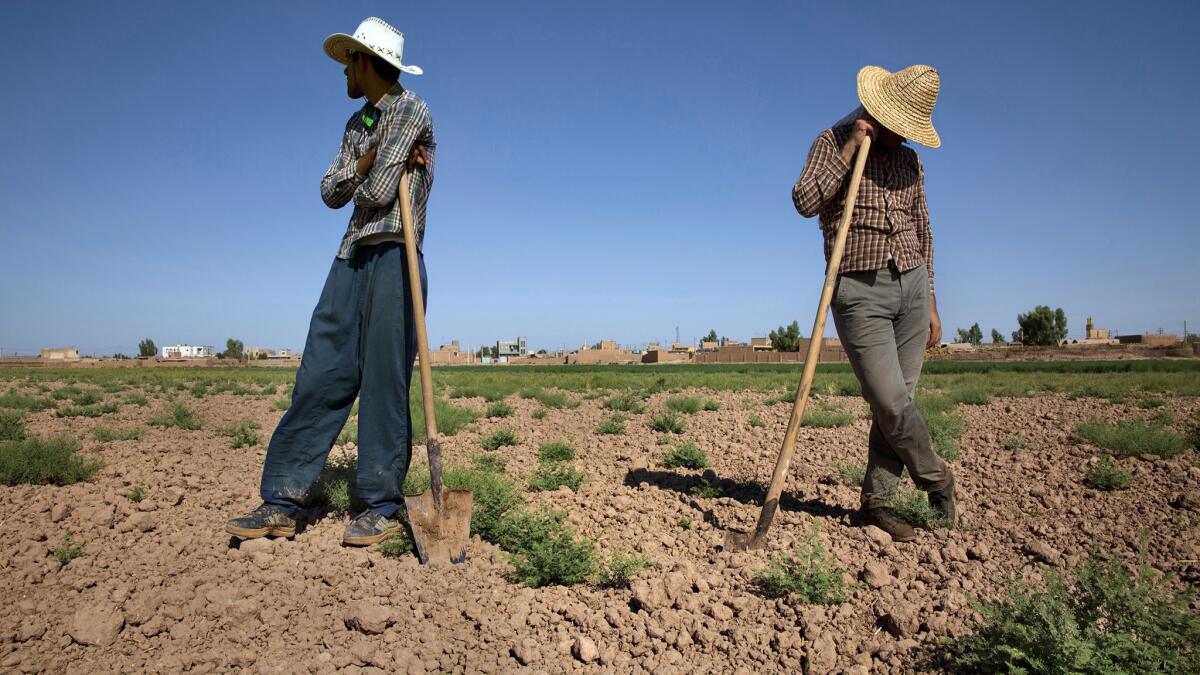
- Share via
Reporting from Qiyasabad, Iran — Watermelons once sprung from this soil, the giant striped fruit dotting the arid landscape like mushrooms after a rain.
“It was such a garden,” farmer Hossain Mirakhouri, 45, recalled of his childhood on this sun-scorched plateau east of Tehran.
Now nothing remains of his family’s patch of watermelon, a water-hungry crop that Mirakhouri can no longer afford to grow in increasingly dry conditions. He and his brothers, who farm a 2-acre homestead by hand much as their ancestors did, have switched to growing barley and genetically modified cotton, which they say have lower water requirements.
“The amount of land that is cultivable shrinks year in, year out,” said Mirakhouri, sweat beading on his stubbled chin.
Iran’s worsening water crisis has spread desperation across this parched farm belt. Families watch sons leave the villages to hunt for scarce work in the cities. Crops are abandoned. The elderly and infirm forego medical care because they barely have enough money to survive.
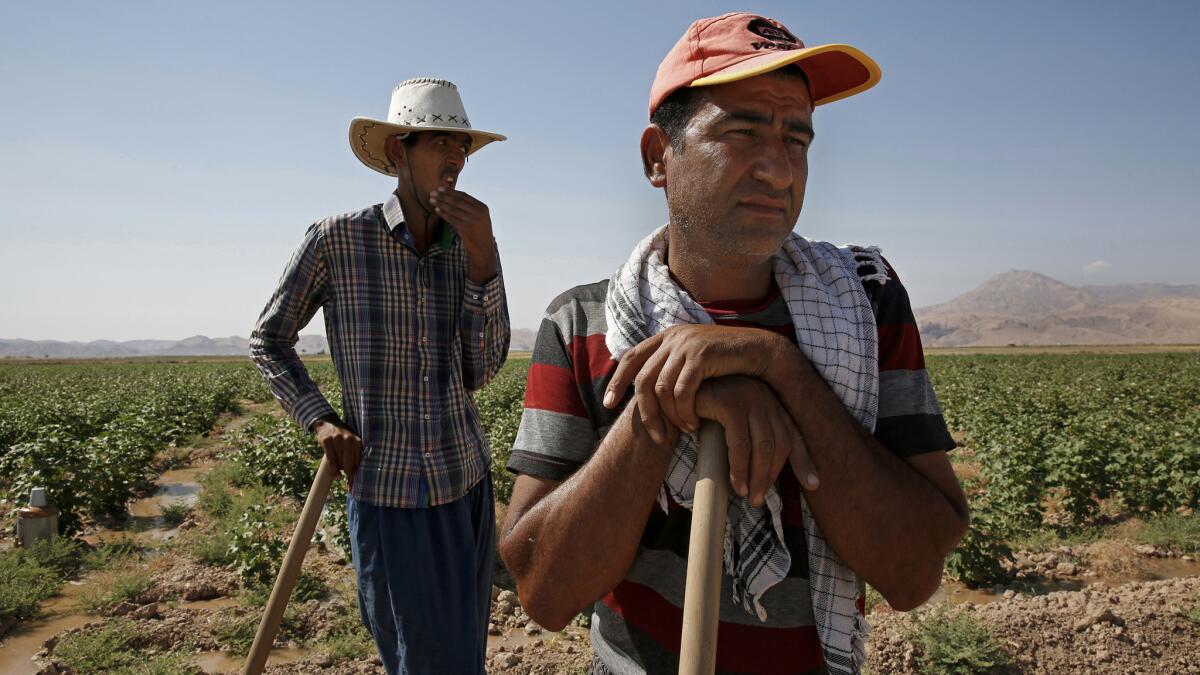
Like their counterparts in California’s Central Valley and elsewhere around the world, Iran’s farmers have struggled with several successive years of drought. But environmental mismanagement, water overuse, the pressures of population growth and a government more concerned with security and economic challenges have exacerbated Iran’s agricultural problems.
Farming was never easy in Iran, where three-quarters of the country gets less than 8 inches of rain a year, most of which evaporates before seeping into the soil.
In June, Iran’s Meteorological Organization said 72% the country’s 80 million people were living in “prolonged drought” conditions. Lakes are drying up and cities like Tehran have considered rationing water.
About 60 miles southeast of Tehran in the hamlet of Qiyasabad, where the dusty earth crunches underfoot like biscuits, farmers say they have suffered from water shortages for more than a decade.
Many worry their livelihoods will disappear altogether.
“The days were not so glorious, even in the past, but they were better than today,” said Malek Rekabdar, 67, standing outside the orange gate of her mud-walled home.
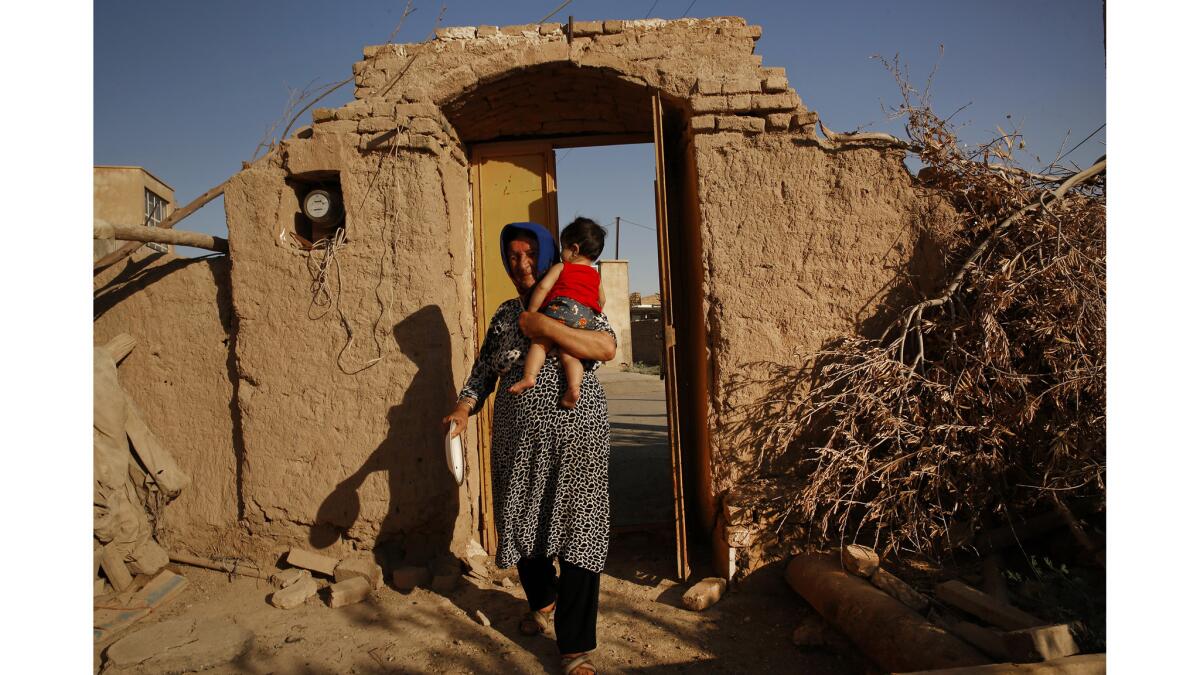
One of her sons had left home to work in a factory, Rekabdar said; another was a laborer in a nearby town. Only her husband and a third son remained in Qiyasabad, farming a small plot of wheat and cotton.
As Rekabdar cradled her granddaughter, Sara, in her arms, a clucking sound came from inside the walls. She raises chickens and grows pomegranates, grinding the tart seeds into a paste to sell at a market.
But the thousands of acres of melon patches and apple orchards that used to guarantee families here at least modest profits have dwindled almost to nothing.
“In general, agricultural land is shrinking,” she said. “People are leaving the village. They don’t see a future here.”
The late Ayatollah Ruhollah Khomeini, founder of the Islamic Republic, once told an aide who worried about inflation that Iran’s 1979 revolution “was not about the price of watermelons” — meaning it stood for loftier goals such as economic equality and redistribution.
Yet by generously subsidizing water and energy, the Iranian regime has given its farmers little incentive to conserve. The agriculture sector uses 90% of Iran’s water but contributes just 15% of its economy. The disparity is just as stark in California, whose economy is much larger but where environmentalists say agriculture uses 80% of the water and accounts for 2% of the economy.
And just as in parts of California, as rainfall has diminished, Iranian farmers — lacking modern irrigation and water storage systems — have dug more wells and used more pumps, depleting groundwater resources at an alarming rate.
In Qiyasabad, residents now must dig as deep as 500 feet to find water. The Hablehrood river, which flows down dun-colored hills to the north, is too salty to use for irrigation, they say. Most farmers still flood their fields to irrigate crops, which is terribly wasteful.
“Ten years ago, I swear, our water was fresh and plenty,” said Karim Baluchi, 54. “Ten years ago I had a decent life.”
Baluchi looked weary as he and a partner, a migrant from Afghanistan, loaded up a truck with bales of hay. Hauling the feed is his only source of income now, earning him and his wife about $300 a month, after the farm in which he was a part-owner was left unplowed because of a lack of water.
He and half a dozen co-owners asked the government this year for a $6,000 loan for a new well and water pump. No one has responded, he said.
Bits of straw flecked Baluchi’s ash-white beard as he rested against the truck, rubbing a leg that chronically ached.
“I would rather be buried alive than go to the hospital,” he said. “I don’t have the money.”
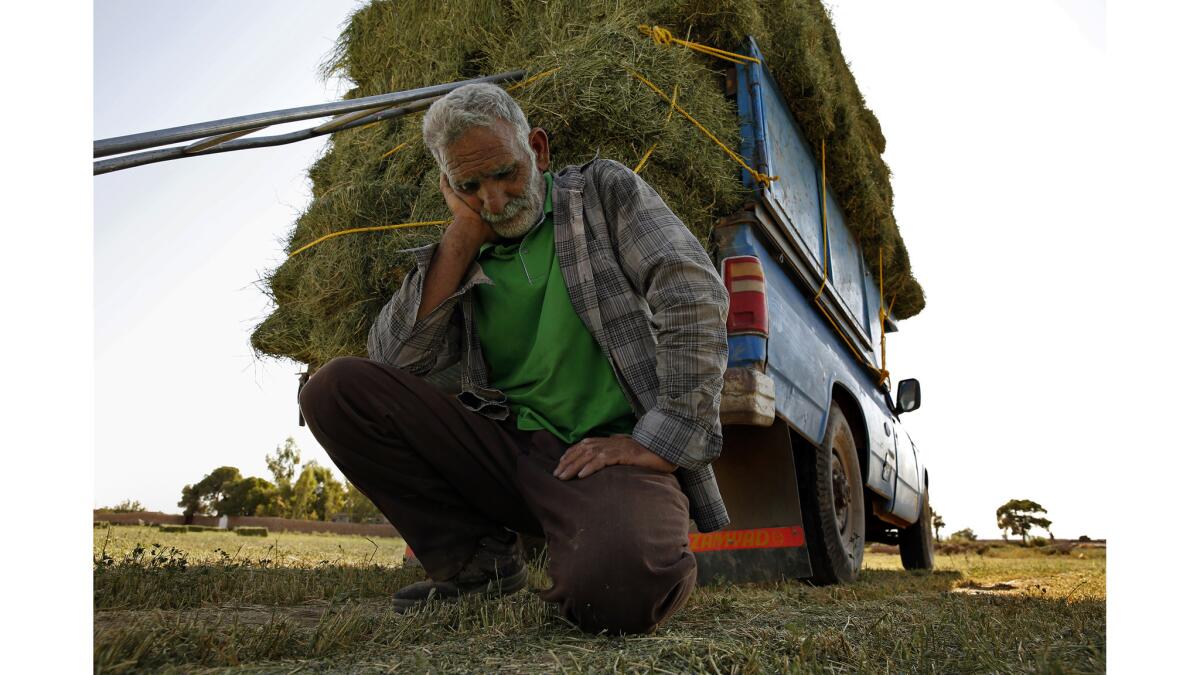
At a fruit stand along the road outside the nearby town of Garmsar there were no watermelons for sale, but stacked on wooden crates under a thick tarp were mounds of kharbozeh, a crisp yellow melon well loved in this region.
The owner, Ismail Kasimi, eased a knife into the flesh of one elongated fruit. He said his daily sales had dwindled from about 1,000 pounds a decade ago to one-fifth that.
“The fruit is not as good. It’s not as sweet. It’s not as big,” said the 50-year-old father of three, seated on the cot outside the stall where he sleeps most nights. “The crop does not survive. Less quality means less taste, which means less sales….
“Whatever money I get in my pocket, I spend for my family. There is nothing more.”
The Iranian government — preoccupied by an economic crisis worsened by international sanctions — has faced criticism for a lackluster response to the farm struggles, which scientists say are being accelerated by a warming climate. In June, a senior cleric raised eyebrows when he said the drought was caused by women failing to wear appropriate Islamic dress.
Belatedly, the government has offered some relief to farmers here, including offering subsidized, high-yield seeds and committing to purchase large quantities of crops.
Critics worry the short-term fixes ignore the need for massive investment in promoting modern, water-sensitive farming practices.
Mirakhouri, for his part, was grateful for the subsidized cotton seeds and a small irrigation channel the government helped dig last year. His cousins and uncles had all moved to cities such as Tehran and Esfahan, but he hoped his 14-year-old son, Danial, would take over the land.
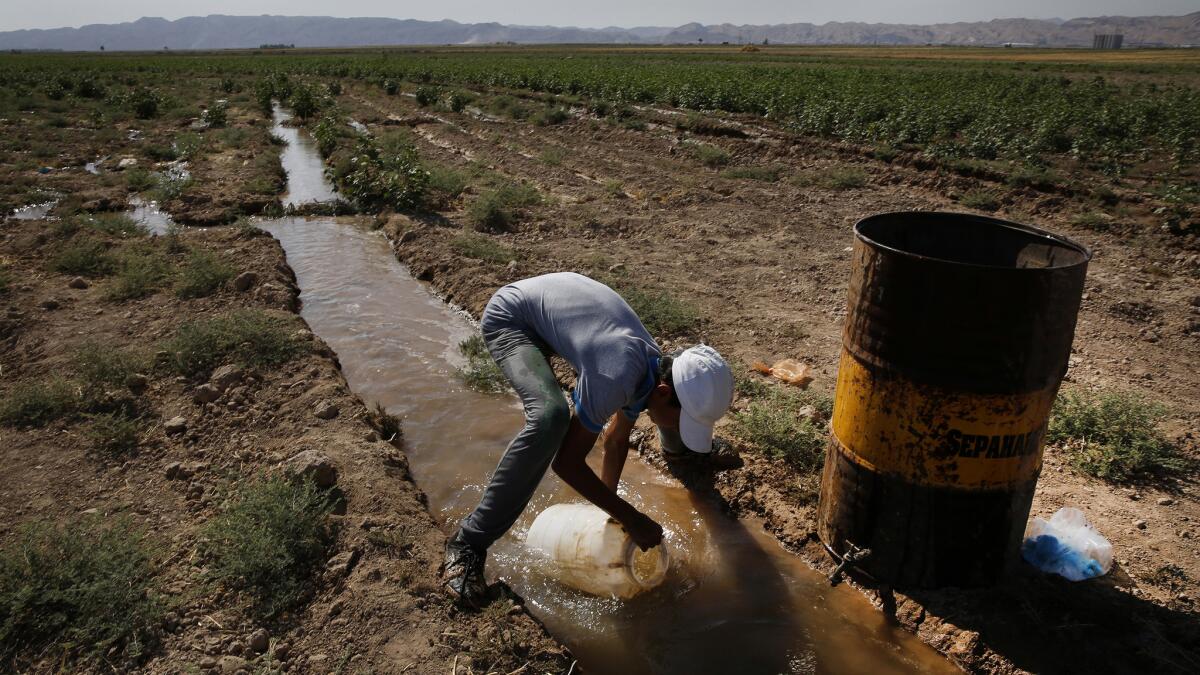
“Of course he will stay on the farm,” Mirakhouri said. “That is what we have always done.”
Hassan, the boy’s uncle, shook his head.
“Why should be continue this work? Just because it’s our ancestral job?” said Hassan, genial and thickly built. “It’s a lot of hardship with no payoff. Let him go to the city.”
Danial stood quietly, wiping his hands on his jeans. The slender boy squinted through the sun in the direction of Garmsar, where concrete buildings and factories appeared as hazy specks, while his father and uncle continued to argue.
Later, Danial would say, he dreamed of becoming a doctor.
Follow @SBengali on Twitter for more news from South Asia.
Mostaghim is a special correspondent.
ALSO:
Iran’s supreme leader tells former president Mahmoud Ahmadinejad not to run again
249 drought maps show just how thirsty California has become
Friday isn’t just for prayers in Iran. For car enthusiasts, it’s also race day
More to Read
Sign up for Essential California
The most important California stories and recommendations in your inbox every morning.
You may occasionally receive promotional content from the Los Angeles Times.











